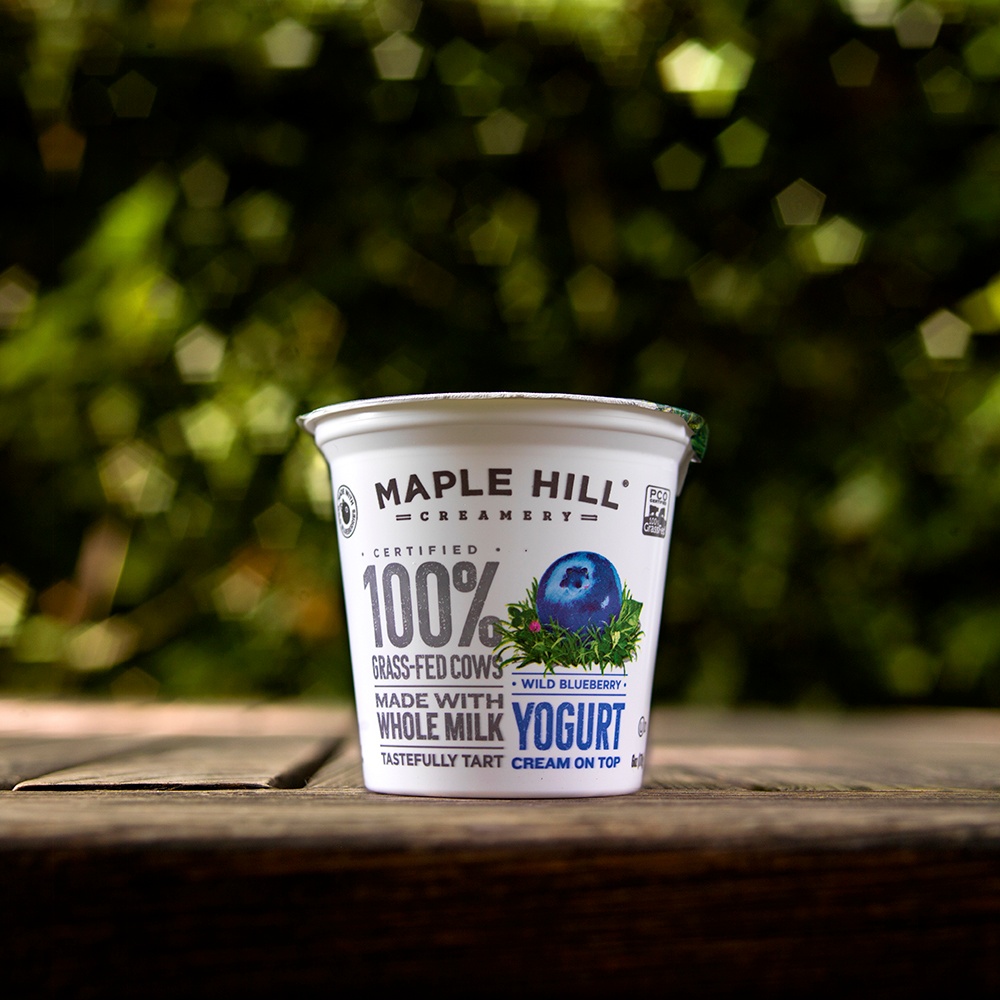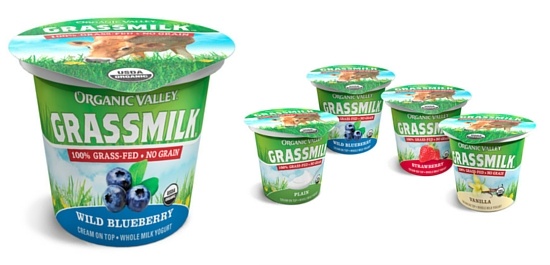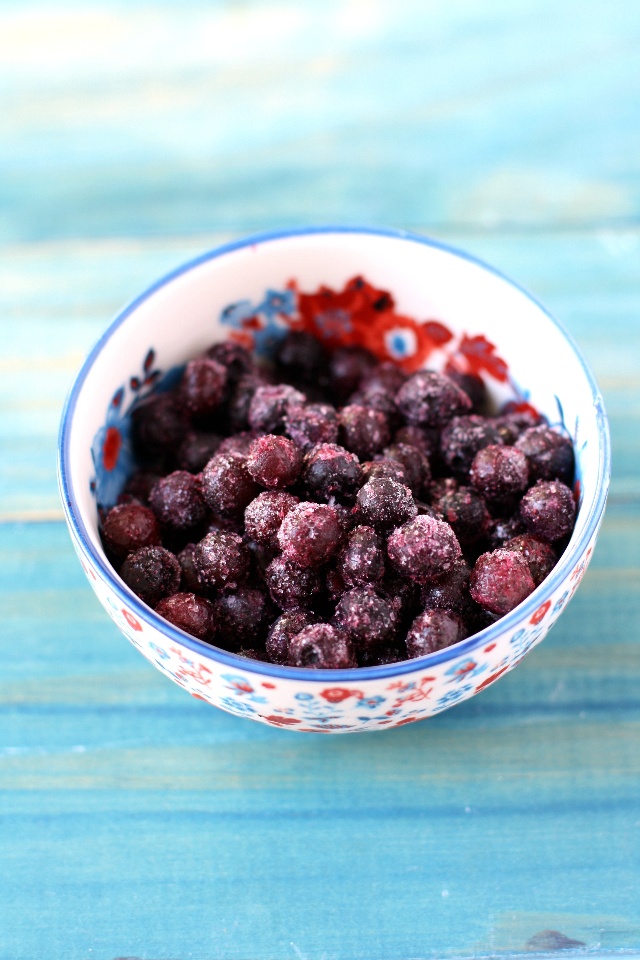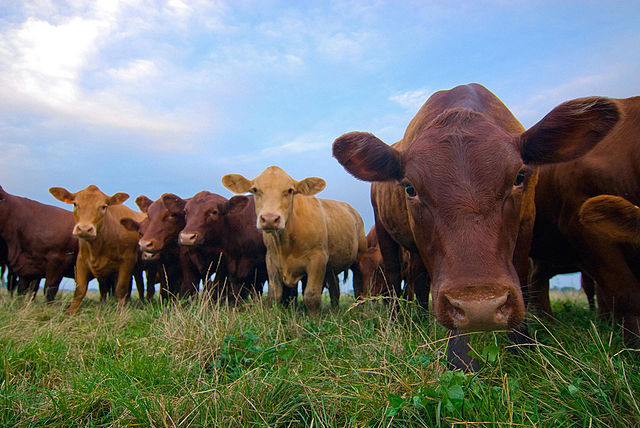At Maple Hill Creamery & Organic Valley, Wild Blueberries + Grass-Fed Yogurt = a Perfect Pair
When Maple Hill Creamery debuted its line of 100% Grass Fed Cream on Top Yogurts in 2010, Wild Blueberries emerged as an obvious choice for the flavor lineup, along with plain, vanilla, maple, lemon, and orange creme varieties.
Having enjoyed the intense flavor of Wild Blueberries fresh from the field and prepared in jams and pies, Maple Hill’s founders knew that the indigenous superfruits would perfectly fit into the company’s commitment to use real, organic ingredients—and avoid processed flavored extracts made with chemicals. Plus, Wild Blueberries contained unique health benefits,

“As we committed early on to eschew using “natural” flavors in our yogurt, we chose Wild Blueberries for their intense blueberry flavor and color,” says Sara Talcott, vice president of marketing and communications for Maple Hill, based in Stuyvesant, New York. “Using Wild Blueberries was a good fit for our artisanally-produced product.”
Indeed, consumers have clamored for Maple Hill’s 100% Grass Fed Wild Blueberry yogurt, and the Wild Blueberry drinkable yogurt, which the company introduced in 2013.
Wild Blueberry is the most popular SKU among its six-ounce, non-plain Cream on Top yogurts, says Talcott. And out of the more than 20 products Maple Hill sells, Wild Blueberry is the fifth-most popular flavor.
Consumers “love the taste and that we don’t add a lot of sugar or “natural” flavors to enhance the real flavor of the berries,” Talcott added.

Organic Valley Goes Wild
Organic Valley, the nation’s largest cooperative of organic farmers, has also determined that Wild Blueberries and Grass-Fed Milk are a winning recipe.
Organic Valley plans to add a Wild Blueberry flavor to its lineup of six-ounce grass milk yogurt cups in September 2016, along with strawberry and organic fair trade vanilla varieties.
“Our consumers are always looking for ingredients that are as close to the way nature intended,” says Nicole Mydy, Brand Innovation Manager for the La Farge, Wisconsin-based cooperative. “We also found Wild Blueberries to have the flavor profile we were looking for while maintaining a short, simple ingredient statement.”

Knowing that their core customers are always seeking the maximum nutrition out of their food choices, Wild Blueberries well-known antioxidant powers, were also a plus, Mydy adds.
Organic Valley is looking to build on the momentum that its Grassmilk yogurts have gained since the company introduced the product in vanilla and plain flavors in 2015. The products feature cream-on-top, whole milk yogurt from 100% grass-fed, non-homogenized organic milk and live probiotic cultures.
Health Benefits and Sustainability Drive Sales
Any dairy maker looking to sate consumers’ current cravings would be hard- pressed to think of a better pairing than grass-fed dairy and Wild Blueberries. A roundup of 2016’s hottest food trends by the nation’s leading research firms indicates that demand is swelling for naturally-healthy, minimally-processed, environmentally-sustainable ingredients with the unique health benefits and compelling origin stories that both Wild Blueberries and grass-fed dairy products offer.
Mounting research has shown that antioxidant-rich Wild Blueberries and the bioactive phytonutrients that give them their deep-blue color may help stave off chronic disease, cancer, heart disease, Alzheimer’s disease, and other conditions. They also help protect the body against damage from pollution, sunlight, and other stressors that have been linked to chronic disease. Plus, Wild Blueberries are higher in antioxidants, fiber, and disease-fighting nutrients than cultivated varieties.
The popularity of dairy products that are made with milk from grass-fed cows has soared in recent years as word has spread about its nutritional and environmental edge over conventionally made milk that is sourced from cows that eat grains and corn. In fact, Whole Foods product experts listed the “Graze Craze” among the top food trends for 2016.

Studies have shown that milk from grass-fed cows has a ratio of Omega-3 Fatty acids that is healthier for humans than milk from conventionally-fed cows. And farmers argue that producing grass-fed milk also has less of an environmental impact. Maple Hill Creamery points out that because grass-fed cows eat grass that is already growing on the farm, fewer fossil fuels are required than for conventionally-made milk, where cows eat corn and grain that must be grown, processed and shipped to farms. When cows consume grass in a rotation on the farm, it also keeps the pastures fertile, healthy, and growing.

